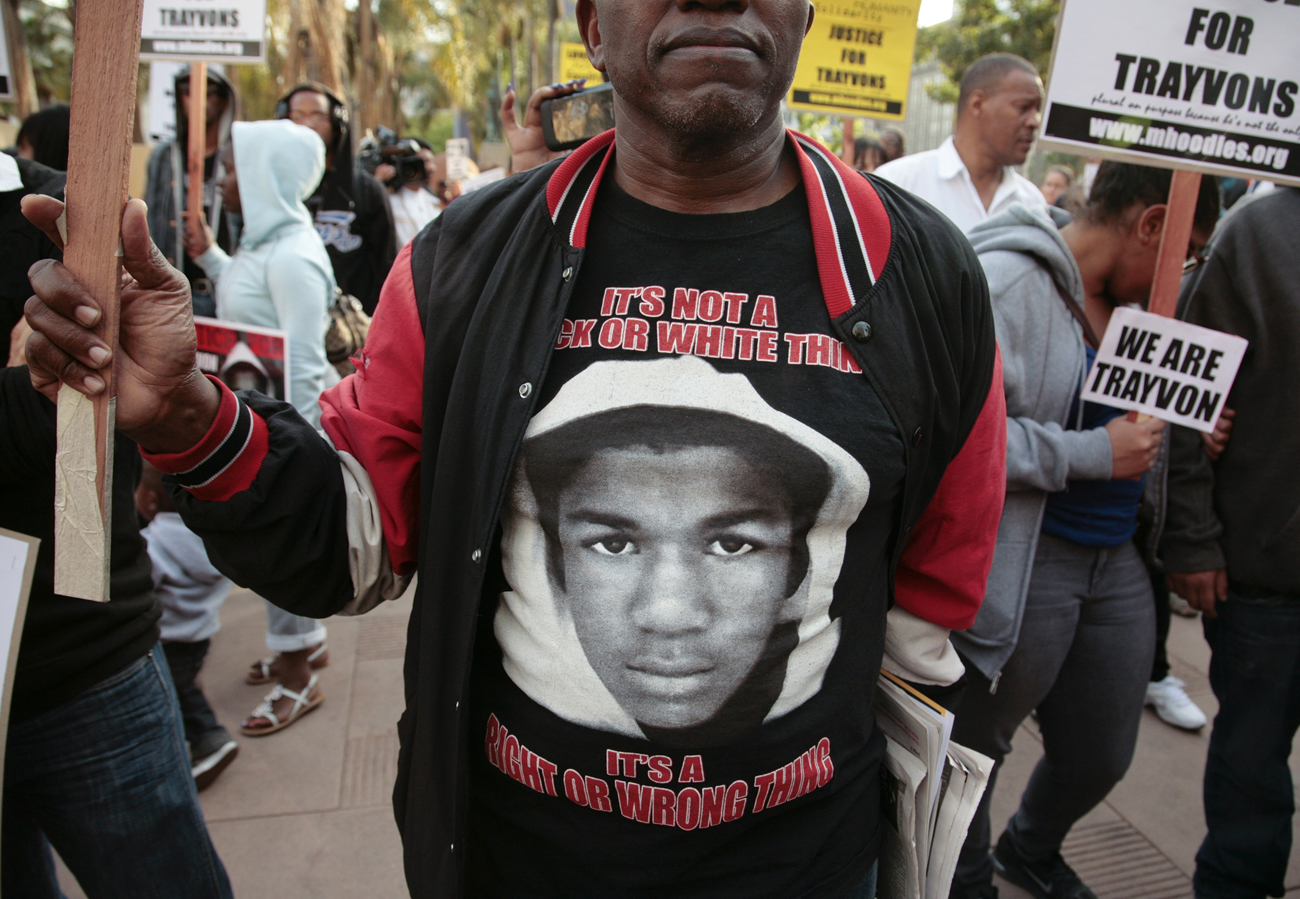Kenneth and Mamie Clark were African-American psychologists working in the 40s and 50s and set out to test children’s perceptions of race. Their best-known experiment involved showing black children, aged 6 to 9, a black doll and a white doll and asking them what they thought of each. Eleven out of 16 children said the black doll looked “bad” and 9 out of 11 said they thought the white doll looked “nice”. When the Clarks asked the children to show them the doll which was most like them, 7 out of 16 picked the white doll.
The Clarks’ studies were used to challenge the segregated school system because it was argued that “these children saw themselves as inferior, and they accepted the inferiority as part of reality”. The doll studies are considered as classic because they were one of the first investigations into children’s perceptions of race, and the accompanying social status children affix to different races.
In the wake of the Trayvon Martin shooting, CNN decided to revisit the territory of the Clarks’ research to investigate how contemporary American children see race. At the beginning of this month, the results of a poll commissioned by CNN along these lines were released.
For the survey, black and white American children were shown pictures of black and white American children in ambiguous playground situations and asked questions like: “What’s happening in this picture?”, “Are these two children friends?” and “Would their parents like it if they were friends?”
The pictures showed images of, for instance, a white kid sitting on the ground in front of a swing while a black boy stood behind the swing. The majority of younger black kids (aged 6 to 13) were more likely to interpret the picture as “Chris is helping Alex up off the ground,” rather than “Chris pushed Alex off the swing”. Only 38% of black kids interpreted the pictures negatively, whereas 70% of white kids in the same age group suspected something suspicious was going on.
University of Maryland Professor Melanie Killen explained this discrepancy to CNN as attributable to the ways in which parents talk to kids about race. She said: “[Black parents] are certainly talking about issues of race and what it means to be a different race and when it matters and when it doesn’t matter.”
In Killen’s view, the relative reluctance of white parents to talk about race may stem from the best possible motives but nonetheless still be misguided: “[White parents] sort of have this view that if you talk about race, you are creating a problem and what we’re finding is that children are aware of race very early”.
However, the study found that by the age of 13 black and white kids were equally negative about race. Teenagers were shown the same kind of ambiguous scenario pictures, but adjusted to make them more age-appropriate: a black boy sprawling on the floor next to his locker, with books scattered on the floor, while a white boy stood behind. By this time, age groups were interpreting the pictures in a similarly negative way. (It must be said that the study did not appear to acknowledge the possibility that this could be attributable to a generally greater cynicism attached to ageing.)
While 49% of young children of both races thought that cross-race friendship was possible, only 35% of adolescents held this view. The study found that the best way to avoid this slide towards negative attitudes around race was to attend racially diverse schools: those children who do are far more likely to view cross-race interactions positively.
This is pretty depressing stuff for a land presided over by its first black leader. But one black American teenager who would have been justified in holding cynical views about race was the late Trayvon Martin, 17 at the time of his death. The CNN poll’s findings reflect a truth that has become starkly evident in the weeks following Martin’s shooting: that racial divisions in the US still run deep.
It’s now been over a month and a half since Trayvon Martin was killed – a story the Daily Maverick covered, but almost every day brings new headlines in the US media about the story, which shows no sign of dying down. On Easter Monday, protesters blocked the police department in Sanford (where Martin was shot) for five hours, before police chiefs agreed to hold a community forum on 19 April to listen to race-based grievances.
Martin’s shooter, George Zimmerman, this week launched a website dedicated to raising funds for his legal battle. The site, titled The Real George Zimmerman, includes a tab labelled “My Race”. But anyone who clicks on it seeking clear answers as to Zimmerman’s approach to racial matters will be disappointed. Against the backdrop of a billowing American flag, all the web page presents is a Thomas Paine quote: “The world is my country, all mankind are my brethren, and to do good is my religion”.
Last week, NBC News was in the eye of the storm, after it emerged that the broadcaster had played a deceptively edited segment about the Martin case. On 27 March, NBC played what was presented as George Zimmerman’s full call to emergency services before shooting Martin, where Zimmerman is heard saying “This guy looks like he’s up to no good. He looks black.”
A conservative media monitoring group was suspicious, and investigated. It emerged that what Zimmerman had actually said on the call was: “This guy looks like he’s up to no good. Or he’s on drugs or something. It’s raining and he’s just walking around, looking about.” The 911 dispatcher responds: “Ok, and this guy, is he white, black or Hispanic?” – to which Zimmerman replies, “He looks black”.
NBC News attributed this selective editing of the audio clip to “an error made in the production process”, an excuse which failed to convince many conservative media pundits. As an acknowledgement of the gravity of the “mistake”, however, they fired the producer responsible. The incident was significant because of the fierce ongoing debate as to whether race was the primary motivation in the Martin shooting, and whether Zimmerman is a racist. NBC’s edited segment appeared to answer both questions in the affirmative.
If NBC stands accused of using the Martin case to push a particular agenda, there are plenty of people using it to push the opposite agenda. On Easter Sunday, Detroit drivers were presented with an electronic highway sign saying “Trayvon A N*****”. Police said afterwards that the sign had been hacked. Last week, the wall of the Frank W Hale Jr Black Cultural Centre at Ohio State University was defaced with graffiti reading “Long live Zimmerman”.
Those individuals hoping to make racist mileage of the incident are not limited to graffiti artists and hackers. Last week, conservative magazine the National Review fired longtime writer John Derbyshire for a column he wrote for the rightwing Taki’s Magazine entitled “The Talk: Nonblack Version”.
Since the shooting of Martin, there has been much written about “the talk” black parents have to have with their sons, described in The New York Times as “the one that has nothing to do with sex, and everything to do with what it means to be a black teenager in a country with a history of regarding young black men as a threat. The talk about standing up straight, dressing the part, keeping your hands in sight at all times and never, ever letting your anger get the best of you”.
John Derbyshire took it upon himself to write a “white” version of “the talk”. Among the pieces of advice he says he would give white children are: “Avoid concentrations of blacks not all known to you personally”, and “If you are at some public event at which the number of blacks suddenly swells, leave as quickly as possible”.
There is also a particularly offensive and fallacious paragraph about black IQs. A storm of criticism followed, and though the piece is still available at Taki’s Magazine, the National Review decided to distance itself from Derbyshire by firing him. The Review’s editor wrote, in a statement published on Saturday: “[Derbyshire’s] latest provocation, in a webzine, lurches from the politically incorrect to the nasty and indefensible …This column is so outlandish it constitutes a kind of letter of resignation”.
The column, at the time of writing, featured 3,925 comments under it, many of which expressed approval for its views. Since Derbyshire’s firing, other columns have been written in his support.
In the current American public discourse, the issue of race is suddenly everywhere. A Newsweek/Daily Beast poll last week found that the killing of Trayvon Martin had served to further polarise the USA along racial lines: while only 35% of white Americans believed Martin’s shooting was racially motivated, 80% of black Americans were sure it was. Sixty percent of black respondents felt that racism was generally a big problem in the US, with only 19% of whites agreeing. However, the majority of both races agreed that America is currently divided by race.
Against this fractious backdrop, last Saturday marked the 50th anniversary of the release of the movie version of Harper Lee’s Pulitzer Prize-winning novel, To Kill A Mockingbird. To celebrate, a special national broadcast was held, with an introduction by President Barack Obama. Conservative pundits were worried, in advance of the broadcast, that Obama would use the occasion of the screening of a film essentially about race relations to explicitly make reference to the Trayvon Martin case. As it turned out, Obama didn’t even mention the word “race”, probably mindful of the volatile national climate.
“Half a century later, the power of this extraordinary film endures,” Obama said. “It still speaks to us. It still tells us something about who we are as a people, and the common values that we all share.”
In a way this is an intriguing statement, since To Kill A Mockingbird is about a white lawyer who takes on the defence of a rape-accused black man despite the disapproval of the community, and eventually succeeds in breaking up a mob intent on lynching him. The figure of Atticus Finch, the lawyer, is generally taken as emblematic of courage, conviction and doing the right thing despite the consequences.
Presumably this is what Obama was optimistically intending to invoke by referencing the “common values that we all share”, but in a sense the more resonant part of his statement is the idea that the film “still tells us something about who we are as a people”. There may no longer be lynch mobs stalking small-town America, but racial divisions are very much alive and well. DM
Read more:
- Newsweek/Daily Beast Poll Finds Majorities of Americans Think Country Divided by Race, in the Daily Beast.
- AC 360 study: African-American children more optimistic on race than whites, in CNN.
Photo: Civil rights activists and protesters march in downtown Los Angeles, California, on 9 April 2012, as they seek justice for 17-year-old Trayvon Martin. The February 26 killing of the black teenager by George Zimmerman, a white Hispanic, has triggered protests around the country. REUTERS/Jason Redmond.





